Microsoft Announces Surface Laptop 3 Family: Now Including 15-Inch Models & Custom AMD Ryzen APUs
by Ryan Smith on October 2, 2019 4:00 PM EST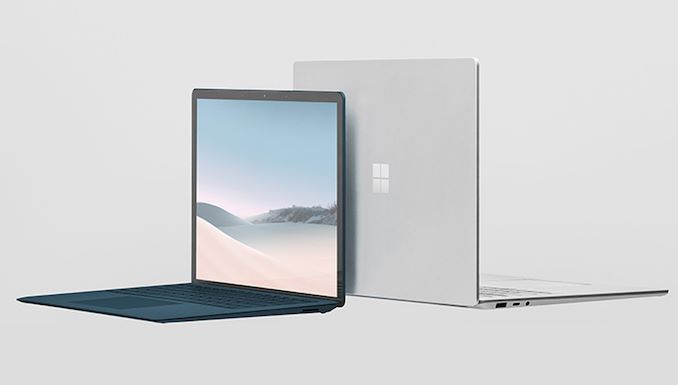
Kicking off the holiday quarter for Microsoft, today the company held its annual Surface press event, where the company announced a slate of new laptops, tablets, & 2-in-1s for the PC market. While there are a few items to get through, probably the marquee announcement for AnandTech readers is the Surface Laptop 3 family. The latest iteration of Microsoft’s laptops aren’t changing too much in terms of overall design, but this year’s models include a new 15-inch model, as well as models that incorporate semi-custom AMD Ryzen APUs, marking the first time AMD has landed a deal for a Surface device.
Surface Laptop 3: Adding Ice Lake & USB-C
Starting from the top, the Surface Laptop 3 family is a pretty straightforward follow-up to last year’s Surface Laptop 2. In terms of the 13.5-inch model – which until now has been the only model – Microsoft isn’t doing anything radical in terms of form factor or function, so the wedge-shaped laptop still fulfills the basic role of serving as Microsoft’s upscale, in-house designed laptop.
Under the hood, Microsoft has given the Surface Laptop 3 a full generational update, replacing Intel’s 8th gen Core processors with the company’s 10th gen Core “Ice Lake” parts. Ice Lake, as regular readers might recall, are one-half of Intel’s 10th generation family, incorporating all of Intel’s latest technologies from CPU to GPU to networking, and for this year are being reserved for high-end devices like the Surface Laptop. The 13.5-inch Surface Laptop 3 can be ordered with either the Core i5-1035G7, or the Core i7-1065G7. Both of these are quad core parts on the CPU side and 64 EU parts on the GPU side; and while the CPU performance gains are going to be somewhat limited relative to the Surface Laptop 2 (especially the i7), on the GPU side of matters these new laptops are going to be vastly faster when it comes to graphics.
| Microsoft Surface Laptop Family (13.5-Inch) | ||||||
| Surface Laptop 2 | Surface Laptop 3 | |||||
| Processor | Intel Core i5-8250U 4C/8T, 1.6-3.4GHz, 6MB L3, 14nm, 15w Intel Core i7-8650U 4C/8T, 1.9-4.2GHz, 8MB L3, 14nm, 15w |
Intel Core i5-1035G7 4C/8T, 1.2-3.7GHz, 6MB L3, 10nm, 15w Intel Core i7-1065G7 4C/8T, 1.3-3.9GHz, 8MB L3, 10nm, 15w |
||||
| Memory | 8 GB or 16 GB LPDDR3 | 8 GB or 16 GB LPDDR4X-3733 | ||||
| Graphics | Intel Core i5-8250U Intel UHD Graphics 620 (Gen 9.5, 24 EUs) Intel Core i7-8650U Intel UHD Graphics 620 (Gen 9.5, 24 EUs) |
Intel Core i5-1035G7 Intel Iris Plus "G7" Graphics (Gen 11, 64 EU) Intel Core i7-1065G7 Intel Iris Plus "G7" Graphics (Gen 11, 64 EUs) |
||||
| Display | 13.5" 2256x1504 3:2 PixelSense Touch and Pen support 100% sRGB color, individually calibrated panels |
13.5" 2256x1504 3:2 PixelSense Touch and Pen support Individually calibrated panels? |
||||
| Storage | 128 GB, 256 GB, 512 GB, 1 TB PCIe 3.0 x2 | 128 GB, 256 GB, 512 GB, 1 TB PCIe NVMe | ||||
| Networking | 802.11ac, 2x2:2, 866Mpbs Max, 2.4 and 5GHz Bluetooth 4.1 Marvell AVASTAR |
802.11ax Bluetooth 5.0 |
||||
| Audio | Omnisonic Speakers Dolby Audio Premium |
Omnisonic Speakers Dolby Audio Premium |
||||
| Battery | 47.5 Wh 44 W AC Adapter with USB charging port |
"Up to 11.5 Hours" 60 + 5 W AC Adapter |
||||
| Right Side | Surface Connect Port | Surface Connect Port | ||||
| Left Side | USB Type-A Mini DisplayPort 1.2 Headset Jack |
USB Type-A USB Type-C Headset Jack |
||||
| Dimensions | 308 x 223 x 14.48 mm (12.13 x 8.79 x 0.57 inches) | 308 x 223 x 14.51 mm (12.13 x 8.79 x 0.57 inches) | ||||
| Weight | Core i5: 1.252kg Core i7: 1.283kg |
Fabric: 1.25kg Metal: 1.31kg |
||||
| Camera | Front: 720p Camera and Windows Hello support Dual microphones |
Front: 720p Camera and Windows Hello support Dual far-field Studio Mics |
||||
| Extras | Surface Pen and Dial (sold separately) TPM 2.0 |
Surface Pen and Dial (sold separately) TPM 2.0 |
||||
| Pricing | 128 GB Core i5 8GB RAM: $999 256 GB Intel Core i5 with 8GB of RAM: $1299 256 GB Intel Core i7 with 8GB of RAM: $1599 512 GB Intel Core i7 with 16GB of RAM: $2199 1 TB Intel Core i7 with 16GB of RAM: $2699 |
128 GB Core i5 8GB RAM: $999 | ||||
The shift to Ice Lake means that Microsoft also finally gets to make the long-anticipated jump from LPDDR3 to LPDDR4X. Like other Ice Lake laptop vendors, Microsoft will be running their memory at the full 3733 Mbps speed that Ice Lake can support, with either 8GB or 16GB of memory. And since this is LPDDR, it’s worth reminding everyone that it is soldered-down, so this isn’t user-upgradable.
Ice Lake also means the Surface Laptop is getting a networking upgrade. Whereas the previous generation part shipped with an 802.11ac + BT 4.1 solution powered by a Marvell controller, Surface Laptop 3 gets 802.11ax + BT 5.0. Microsoft isn’t explicitly specifying that they’re using Intel’s wireless technology here, but given that it’s one of the main features of Ice Lake and partially integrated into the SoC, I would be very surprised to see anything else.
Meanwhile, according to Microsoft storage is being provided via M.2 NVMe SSDs. This is a notable improvement for the laptop family, as Microsoft was previously using soldered-down BGA SSDs. The switch to M.2 cards means that the drives are replaceable (albeit not recommended for the layman), and while we’ll have to wait and see a review sample to see what vendors Microsoft is sourcing from, there’s a good chance that this will finally be PCIe 3.0 x4 drives, as opposed to the x2 BGA drives. Overall, Microsoft is offering the same capacities as last time, ranging from 128GB to 1TB, at quickly escalating prices.
Externally, the 13.5-inch model does make a couple of notable changes over its predecessor, and one particularly overdue. Microsoft has dropped the mini-DisplayPort on the left side of the laptop in favor of a badly needed USB Type-C port, giving the Surface Laptop modern connectivity options. For better or worse this is just a USB-C port – there’s no Thunderbolt 3 support, despite using an Intel Ice Lake processor – so the laptop won’t have quite the performance and compatibility range as a Thunderbolt-equipped laptop, but this is still a major step up from the previous model. At this point Microsoft isn’t quoting transfer speeds, but I have no reason to expect it’s anything less than USB 3.2 Gen 2 (10 Gbps), since that’s native to the CPU Microsoft is using.
Microsoft has also added some new chassis material options for the laptop. Along with the traditional aluminum + Alcantara fabric option, the company is also doing an all- aluminum version as well. As you might expect, they will come in different colors, with the fabric version available in Platinum and Cobalt Blue, while the aluminum version comes in Matte Black and Sandstone.
Meanwhile, Microsoft appears to be retaining the same PixelSense display as the Surface Laptop 2. This is a 3:2 aspect ratio panel offering a 2256x1504 resolution, as well as multitouch capabilities. Interestingly, none of Microsoft’s published materials mention whether the display is individually calibrated like the Surface Laptop 2. This is likely an oversight on Microsoft’s part (as of this post their product pages still aren’t up), but it’s something to keep an eye on.
The company has, however, made some changes to the keyboard and trackpad for the laptop. On the former, the new keyboard offers 1.3mm of key travel, which is 0.2mm shallower than the Surface Laptop 2. Meanwhile the trackpad has been enlarged a bit, to 115mm x 76.66mm, with Microsoft quoting the new trackpad as being 20% larger overall.
Tangentially, Microsoft also took a moment to show off that the upper deck of the laptop – the keyboard + trackpad piece – was removable, allowing for easier servicing of the components below. Microsoft is being very careful here to note that this does not mean certain parts are user replaceable – rather they are replaceable by qualified technicians – but it’s something they’re using to make a distinction between the Surface Laptop 3 and Apple’s MacBook Pro family of machines, which these days are notoriously hard to get in to. To that end, Microsoft has also confirmed that the M.2 SSD is replaceable, though again, the company doesn’t want end-users doing it.
Finally, for the battery, Microsoft isn’t disclosing the capacity of the battery, only stating that it is good for “up to 11.5 hours of battery life”. With so many other changes the actual capacity of the battery has likely changed some, but we’ll have to wait for someone to crack open a laptop to find out for sure. Meanwhile the battery’s counterpart, the AC adapter, has been updated; Microsoft has replaced the 44W charger with what they’re calling a “60W + 5W” charger. Presumably this charger once again has a separate USB port for charging other devices – hence the 5W number – so we’re looking at 60W of power to the laptop itself. This laptop/charger combination supports fast charging, with Microsoft claiming that the laptop can get back up to 80% capacity in “under an hour.”
Surface Laptop 3 15-Inch: Going Big With Intel & AMD
Along with updating the existing 13.5-inch model, Microsoft also used this year’s event to announce a 15-inch Surface Laptop 3, allowing the company to offer a larger version of their marquee laptop. Though the Surface Laptop lineup isn’t solely meant to be a counter to Apple’s MacBook Pros, this latest addition further reinforces that notion, as now Microsoft is offering premium laptops at both the 13-inch and 15-inch segments, just like Apple.
But far more interesting with the 15-inch laptop is what’s going on under the hood. For the first time in any of the Surface PCs, Microsoft has tapped AMD to provide processors for their laptops. As a result, the 15-inch Surface Laptop 3 is being offered with both Intel’s Ice Lake processors as well as a semi-custom AMD processor – the “AMD Ryzen Microsoft Surface Edition Processor” – which looks to be largely derived from AMD’s existing Ryzen 3000 APUs. This makes the Surface Laptop 3 one of only a handful of devices with both Intel and AMD options, and more interesting still, the first that is offering Intel’s Ice Lake CPUs and AMD’s Zen+ generation APUs within the same device.
| Microsoft Surface Laptop 3 | |||||||
| 13.5-Inch | 15-Inch (Intel) | 15-Inch (AMD) | |||||
| Processor | Intel Core i5-1035G7 4C/8T, 1.2-3.7GHz, 6MB L3, 10nm Intel Core i7-1065G7 4C/8T, 1.3-3.9GHz, 8MB L3, 10nm |
AMD Ryzen 5 3580U 4C/8T, 2.1-3.7GHz, 15w AMD Ryzen 7 3780U 4C/8T, 2.3-4.0GHz, 15w |
|||||
| Memory | 8 GB or 16 GB Dual-Channel LPDDR4X-3733 | 8/16/32GB Dual-Channel DDR4-2400 | |||||
| Graphics | Intel Core i5-1035G7 Intel Iris Plus "G7" Graphics (Gen 11, 64 EU) Intel Core i7-1065G7 Intel Iris Plus "G7" Graphics (Gen 11, 64 EUs) |
AMD Ryzen 5 3580U Vega 9 Graphics (9 CUs) AMD Ryzen 7 3780U Vega 11 Graphics (11 CUs) |
|||||
| Display | 13.5" 2256x1504 3:2 PixelSense Touch and Pen support Individually calibrated panels? |
15" 2496x1664 3:2 PixelSense Touch and Pen support Individually calibrated panels? |
|||||
| Storage | 128 GB, 256 GB, 512 GB, 1 TB PCIe NVMe | 128 GB, 256 GB, 512 GB PCIe NVMe | |||||
| Networking | 802.11ax Bluetooth 5.0 |
802.11ac 2x2 MIMO Bluetooth 5.0 |
|||||
| Audio | Omnisonic Speakers Dolby Audio Premium |
||||||
| Battery | "Up to 11.5 Hours" 60 + 5 W AC Adapter |
||||||
| Right Side | Surface Connect Port | ||||||
| Left Side | USB Type-A USB Type-C Headset Jack |
||||||
| Dimensions | 308 x 223 x 14.51 mm (12.1 x 8.8 x 0.57 inches) | 339.5 x 244 x 14.69 mm (13.4 x 9.6 x 0.57 inches) | |||||
| Weight | Fabric: 1.25kg Metal: 1.31kg |
1.54kg | |||||
| Camera | Front: 720p Camera and Windows Hello support Dual far-field Studio Mics |
||||||
| Extras | Surface Pen and Dial (sold separately) TPM 2.0 |
||||||
| Pricing | 8GB/128GB/i5: $999 8GB/256GB/i5: $1299 16GB/256GB/i7: $1599 16GB/512GB/i7: $1999 16GB/1024GB/i7: $2399 |
$1199? | 8GB/128GB/R5: $1199 8GB/256GB/R5: $1499 16GB/256GB/R5: $1699 16GB/512GB/R7: $2099 32GB/1024GB/R7: $2799 |
||||
Diving right in to the specs, there are a handful of differences between the Intel and AMD versions of the 15-inch laptop, but all of this is centered around their respective processors and platform capabilities. Otherwise, the two laptops are functionally identical in size, weight, storage, ports, etc.
On the Intel side of matters, Microsoft is offering the same configurations for the 15-inch laptop as the 13.5-inch laptop, which is to say Intel’s Core i5-1035G7 and i7-1065G7 “Ice Lake” processors. These parts offering 4 CPU cores and 64 EUs for the graphics side of matters. Microsoft’s press material doesn’t list the TDP, but as the AMD chips are confirmed for 15W, it’s reasonable to expect the same for the Intel parts. Whether this means the 15-inch model will outperform its smaller counterpart then remains to be seen; even at identical TDPs, the larger laptop does leave some room for better cooling, if Microsoft has gone that direction.
The bigger change, then is the introduction of the AMD option. According to Microsoft and AMD, this is a semi-custom AMD APU, based on the Zen+ CPU architecture and Vega GPU architecture. In practice, this chip looks like it’s a derivative of AMD’s “Picasso” APU, which is what they use in their current-generation Ryzen 3000 APUs. Which means we’re not looking at something based on AMD’s cutting-edge Zen 2 CPU architecture, but then Zen+ is no slouch either. Otherwise, with semi-custom work is always difficult to find out just what is custom, and we’re expecting to at least find out a bit more later this week.
For the moment all we know about the chip that’s different from the regular Ryzen 3000 APUs is that it has an extra graphics CU enabled, giving the chip 11 as opposed to the usual 10. At identical clockspeeds this is a 10% (at most) uptick in graphics performance, so we’re not really expecting big differences from what we’ve seen in other Ryzen 3000 APU laptops, but it remains to be seen just what other customizations are on-hand. AMD for their part has reiterated that they’re aiming for best in class GPU performance, and with both this part and Ice Lake showing up in the 15-inch Surface Laptop 3, they will get their chance to prove that when going against Intel’s best.
As this is a semi-custom part, AMD has disclosed official clockspeeds for the GPU or the CPU. On the CPU side of matters, the Ryzen 5 3580U ships with a base clock of 2.1GHz and a boost clock of 3.7GHz, which happens to be the same as AMD's standard Ryzen 5 3500U. Similarly, the Ryzen 7 3780U runs from 2.3GHz to 4.0GHz, which is identical to the Ryzen 7 3700U. Things are a little different with GPU clocks; the 3580U goes to 1.3GHz (unlike the 1.2GHz 3500U), while the 3780U goes to 1.4GHz, the same peak frequency as AMD's other high-end APUs.
These numbers also indicate Microsoft is lowballing their own performance estimates just a bit. Microsoft and AMD have said the chips offer 1.2 TFLOPs of peak graphics performance – comparable to the Xbox One. However these specs put the 3580U more favorably at 1.3 TFLOPs, and the 3780U is better still at just shy of 1.8 TFLOPs.
Officially, Microsoft has said that they’re happy to work with both vendors while pushing the envelope on graphics, and AMD for its part is always happy to land a semi-custom deal. The fact that Microsoft picked now to diversify their processor offerings is none the less a bit odd, and I can’t help but wonder what spurred this on, especially as validating a second vendor like this for a core component is not a trivial task. Intel of course is expected to be capacity constrained on Ice Lake this year, so it may be Microsoft hedging their bets for laptop availability. Or this may be Microsoft using the prospect of going increasingly AMD as a threat against Intel – which isn’t the most noble of actions, but it’s hardly the first time AMD has been used in this fashion. Either way, I’m sure AMD is happy to have the opportunity to get their APUs in more premium laptops.
Moving on, the use of multiple processor vendors also has some repercussions on the memory side of matters. For the 15-inch Intel laptops, Microsoft will be shipping the machines with the same options as the 13.5-inch models, which is to say LPDDR4X-3700 at 8GB or 16GB. However, because AMD’s processor doesn’t support LPDDR4X – an artifact of using Zen+ – Microsoft is instead equipping those laptops with standard DDR4-2400. The bandwidth and power consumption differences between the memory types are significant, and on paper this is going to give Intel a significant edge on both. So it will be interesting to see what we find with regards to performance and battery life on the review units.
The flip side to all of this, however, is that because DDR4 is readily available in higher capacities, Microsoft is going to be able to offer the AMD version of the laptop with 32GB of DRAM. This gives the AMD model a total capacity advantage, and makes the 16GB limit of the Intel model stick out a lot more. To be sure, it would be possible to equip an LPDDR4X laptop with 32GB of DRAM, but for whatever reason Microsoft isn’t doing this, much to AMD’s advantage.
The final platform-driven difference between the two models will come down to wireless I/O. Whereas the Intel model will offer 802.11ax (Wi-Fi 6) wireless – presumably driven off of the Ice Lake processor – the AMD model is limited to supporting the older 802.11ac standard. Interestingly, Microsoft quotes the AMD laptop as offering 2x2 MIMO while not saying anything similar for the Intel laptop, but if we’re being practical it’s very hard to imagine a premium laptop with 802.11ax shipping with anything less than 2x2, so this is probably an oversight on Microsoft’s part.
Otherwise, past this, the two laptops are identical. Like the 13.5-inch model, both come with a removable M.2 NVMe SSD. Strangely enough, however, the 15-inch laptop will top out at 512GB, whereas the 13.5-inch model is getting 1TB drives.
Both laptops are also getting a larger version of Microsoft’s PixelSense display. The 15-inch model is still a 3:2 aspect ratio display, but it is now scaled up to a 2496x1664 resolution. Like the rest of the Surface products, these are multitouch displays, and they also work with Microsoft’s optional Surface Pen.
Meanwhile, the I/O options for the 15-inch laptop are remaining the same as the 13.5-inch model, meaning 1x USB-A, 1x USB-C, a 3.5mm audio jack, and a Surface Connect port. If nothing else, this is a consistent choice on Microsoft’s part, but it is a bit strange to have a larger laptop and to not use some of that space for another port or two. 2 USB ports on a 13-inch laptop is not unheard of, but 2 USB ports on a 15-inch laptop is odder.
Finally, both the Intel and AMD versions of the 15-inch Surface Laptop 3 will carry the same size, weight, and battery capacity. The 1.54kg laptops are 14.69mm thick, and with Microsoft not promoting specific battery capacities, both are rated for “up to 11.5 hours” of battery life. Knowing what we do about the differences between AMD and Intel’s platforms, it will be interesting to see if the two laptops can actually hold close in battery life, as there are some notable differences under the hood. However we also know next-to-nothing about AMD’s customizations for Microsoft, and given Microsoft’s history here, a focus on power efficiency would be right up their alley.
Wrapping things up, the entire Surface Laptop 3 family is supposed to be available for pre-order today from Microsoft; however as of publication time Microsoft still hasn’t added product and order pages for the new machines. This also means that we have limited visibility into pricing – the 13.5-inch model starts at $999 for the lowest-end configuration, while the cheapest 15-inch model will be $1199. Unfortunately Microsoft hasn’t clarified whether that’s going to be for the Intel model, the AMD model, or both, so we’ll have to wait to see where things stand once Microsoft actually opens up pre-orders. Otherwise, the company will begin shipping the laptops later this month, with orders expected to head out to buyers on October 22nd


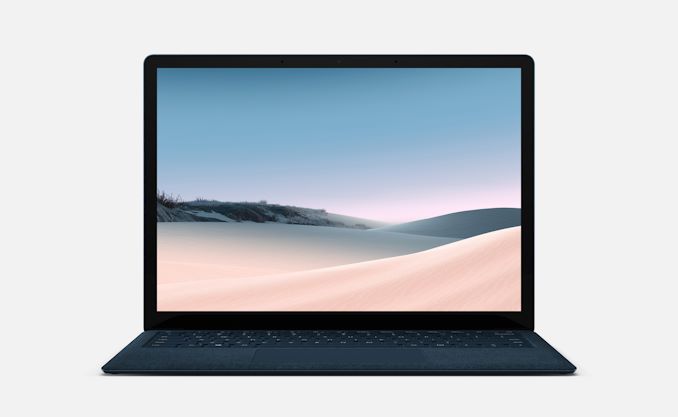


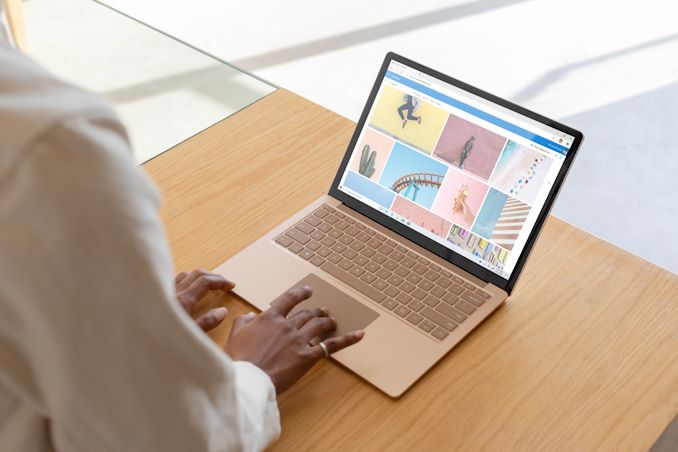
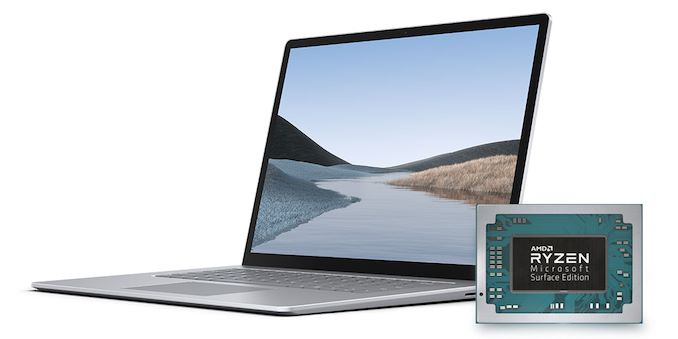
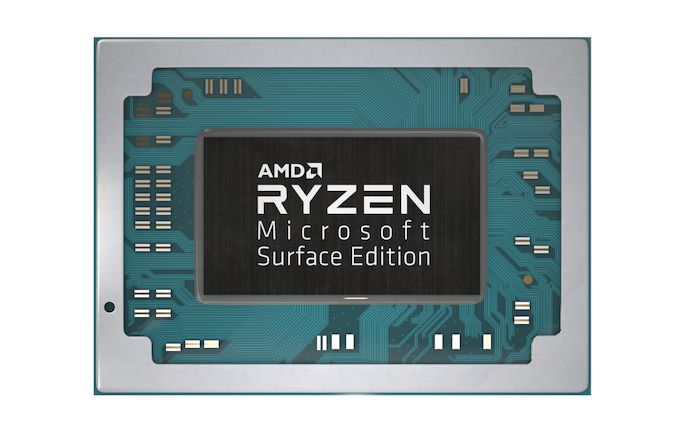
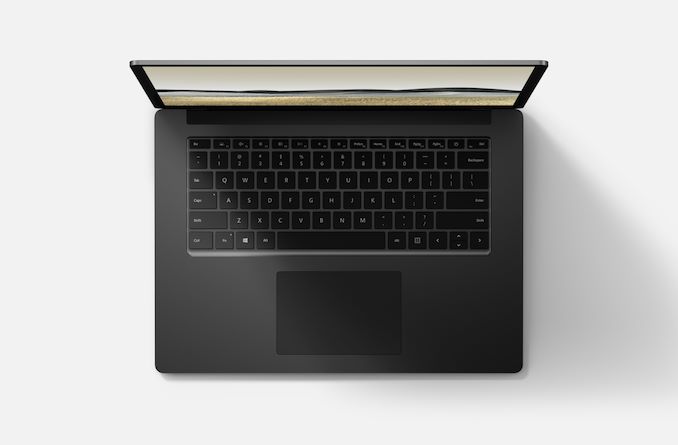
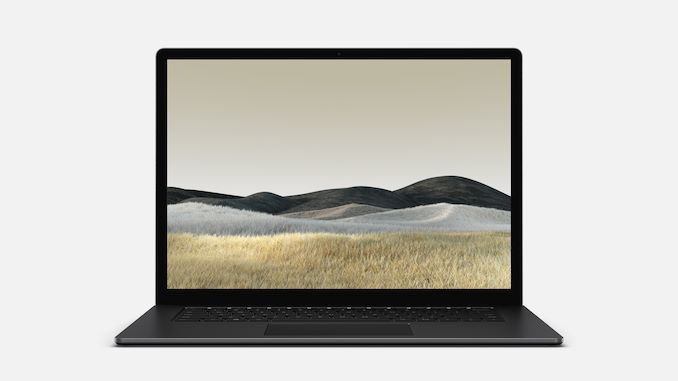









88 Comments
View All Comments
mooninite - Wednesday, October 2, 2019 - link
The Ryzen models are interesting. I'll need to find the perfect penguin sticker to cover that Windows logo on the lid.nathanddrews - Wednesday, October 2, 2019 - link
"Interesting" indeed. If the table is correct, Intel gets 8/16GB Dual-Channel LPDDR4X-3733 while AMD gets 8/16/32GB Dual-Channel DDR4-2400. Intel gets up to 1TB PCIe NVMe while AMD tops out at 512GB.So you can choose a little bit of really fast RAM with more storage or lots of slow RAM and less storage?
firewrath9 - Wednesday, October 2, 2019 - link
LPDDR4X runs on a 32-bit bus, while DDR4-2400 runs on a 64-bit bus.a equivalent speed LPDDR4X would require it to be 4800mhz, the 3733 is basically DDR4-1866, which is quite slow.
The LPDDR4X is actually slower in terms of bandwidth, but the latency are less, which compounds the additional latency that Zen has.
Sad that MS made the AMD models the same price (?) as the Intel models, used to see a Ryzen 7 3700U (MS does have a slightly better 3700U tho" at the same price as a i5-8265U, not the i7-1065G7
Samus - Thursday, October 3, 2019 - link
Intels memory controllers have been so good lately that the difference between LPDDR4X and DDR4 will likely be the difference between single channel and dual channel: virtually nothing.Drake H. - Thursday, October 3, 2019 - link
You're wrong. In dual-channel, this 3733 memory is generating 57.6 Gbps of bandwidth for IceLake's iGPU. The AMD system has only 38.4 Gbps available. Plus, both are running at 128bits compatible with the DDR4 in dual-channel. (64bit x 2)Ice Lake: https://www.notebookcheck.net/fileadmin/Notebooks/...
Vega: https://www.notebookcheck.net/fileadmin/Notebooks/...
firewrath9 - Saturday, October 5, 2019 - link
Let me quote JEDEC, which is the person who makes the memory standards:"LPDDR4 will eventually operate at an I/O rate of 4266 MT/s, twice that of LPDDR3. To achieve this performance, the committee completely redesigned the architecture, going from a one-channel die with 16 bits per channel to a two-channel die with 16 bits per channel, for a total of 32 bits."
Last time I checked, 2x2x16 = 64, not 128. Please let me know if that has changed.
caqde - Saturday, October 5, 2019 - link
LPDDR4X works like GDDR5 when it comes to bus width the chip it connected to will decide bus width and the desired bus width is reached by using a set amount of LPDDR4X chips in this case the width is 128 so 4 32bit LPDDR4X chips are needed.EliteRetard - Thursday, October 3, 2019 - link
I think AMD royally screwed up here... I understand the regular parts are only rated for 2400MHz, but this is a semi-custom part in a top end product. If they were going to beef up the GPU anyway, then they absolutely should have verified the APU for higher RAM speed as well...like 2933MHz at the very least. With the overall lower specs this feels like a comparatively budget laptop. The pricing should not have been any higher than the 13" models (except the 32GB/1TB vs the 16GB/1TB for maybe $150 more). Microsoft also screwed up bad with a 128GB option, everything should have been moved down one price point with 256GB being the minimum option at $999. I also would've loved to have seen a 2TB option, but with the massive gouging between storage tiers ($800 more for a 1TB vs 256GB in the 16GB RAM class) it'd probably be cheaper to buy the factory and have them custom manufacture you a unit.Valantar - Thursday, October 3, 2019 - link
Very interesting, looking forward to reviews here. Not that another CU is likely to make much of a difference in GPU performance, but it's nice to have a fully enabled chip. Also interesting is that AnandTech manages to make such a giant error as saying there's a 15" Intel version - there isn't. Source: https://www.microsoft.com/en-us/p/surface-laptop-3...MarcusMo - Wednesday, October 2, 2019 - link
Kind of disappointed that they didn’t offer a more high end configuration of the 15” version with a higher resolution display at least. Why are they insisting on saving the best stuff for their surface book and likes?I love that Microsoft gets the 3:2 aspect ratio and what it does for productivity, but I don’t want a convertible. If they’d offered this laptop with a 3000x2000 display or better I would have been sold!